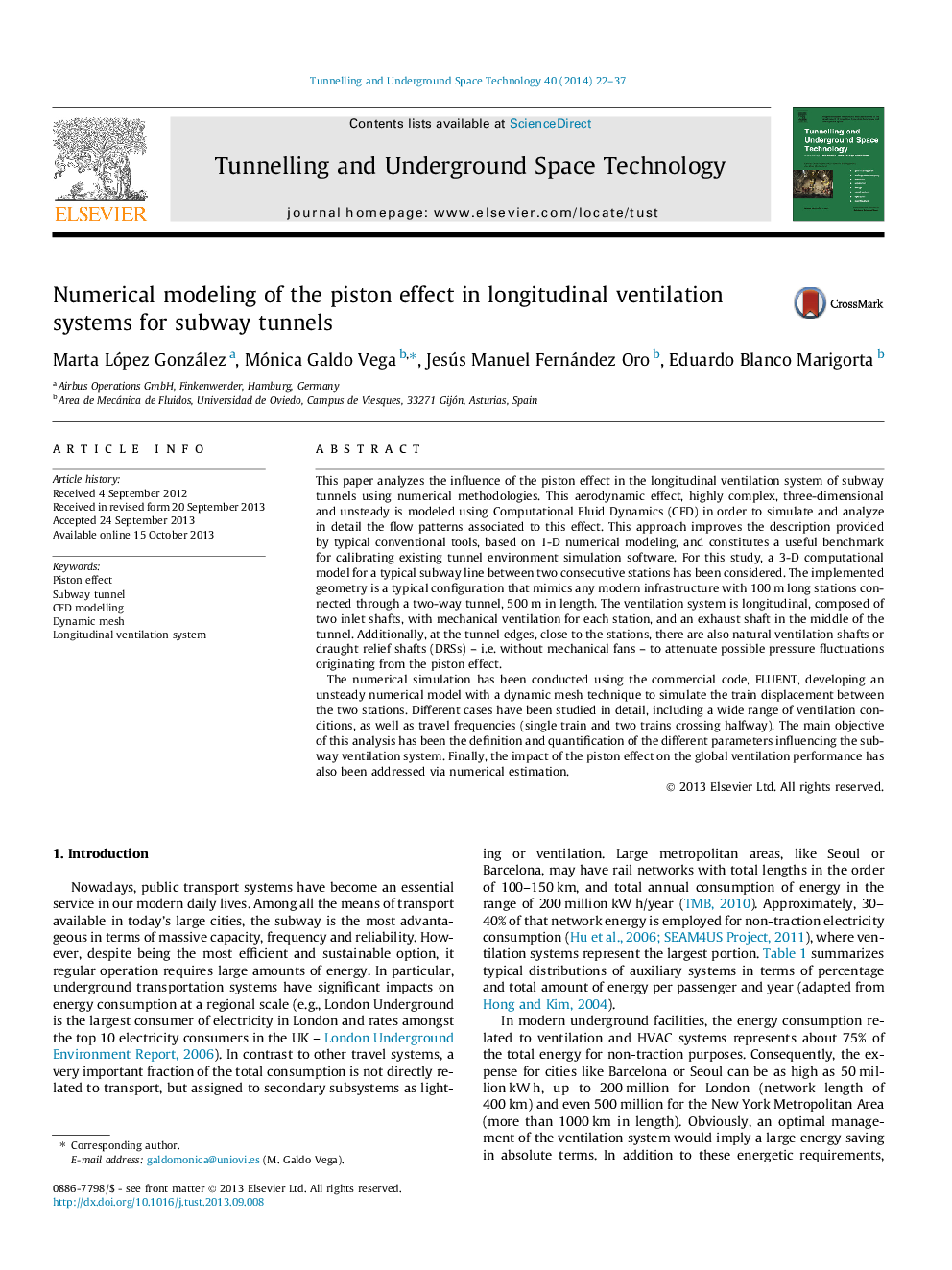| کد مقاله | کد نشریه | سال انتشار | مقاله انگلیسی | نسخه تمام متن |
|---|---|---|---|---|
| 313056 | 534359 | 2014 | 16 صفحه PDF | دانلود رایگان |
• CFD modeling of unsteady 3-D piston effect in subway tunnels using dynamic meshes.
• Effectiveness of typical draught relief shafts are assessed via numerical simulation.
• Piston effect may provide energy savings to mechanical ventilation up to a 3%.
• Instantaneous flow rates due to train-motion can be as high as 50% of inlet ventilation.
• Turbulence and comfort parameters are analyzed for possible piston effect disturbances.
This paper analyzes the influence of the piston effect in the longitudinal ventilation system of subway tunnels using numerical methodologies. This aerodynamic effect, highly complex, three-dimensional and unsteady is modeled using Computational Fluid Dynamics (CFD) in order to simulate and analyze in detail the flow patterns associated to this effect. This approach improves the description provided by typical conventional tools, based on 1-D numerical modeling, and constitutes a useful benchmark for calibrating existing tunnel environment simulation software. For this study, a 3-D computational model for a typical subway line between two consecutive stations has been considered. The implemented geometry is a typical configuration that mimics any modern infrastructure with 100 m long stations connected through a two-way tunnel, 500 m in length. The ventilation system is longitudinal, composed of two inlet shafts, with mechanical ventilation for each station, and an exhaust shaft in the middle of the tunnel. Additionally, at the tunnel edges, close to the stations, there are also natural ventilation shafts or draught relief shafts (DRSs) – i.e. without mechanical fans – to attenuate possible pressure fluctuations originating from the piston effect.The numerical simulation has been conducted using the commercial code, FLUENT, developing an unsteady numerical model with a dynamic mesh technique to simulate the train displacement between the two stations. Different cases have been studied in detail, including a wide range of ventilation conditions, as well as travel frequencies (single train and two trains crossing halfway). The main objective of this analysis has been the definition and quantification of the different parameters influencing the subway ventilation system. Finally, the impact of the piston effect on the global ventilation performance has also been addressed via numerical estimation.
Journal: Tunnelling and Underground Space Technology - Volume 40, February 2014, Pages 22–37
